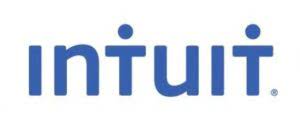
The credit balance in this account comes from the entry wherein Bad Debts Expense is debited. The amount in this entry may be a percentage of sales or it might be based on an aging analysis of the accounts receivables (also referred to as a percentage of receivables). A record in the general ledger that is used to collect and store similar information. For payroll example, a company will have a Cash account in which every transaction involving cash is recorded. A company selling merchandise on credit will record these sales in a Sales account and in an Accounts Receivable account.

Vendor Code of Conduct
This list will usually also include a short description of each account and a unique identification code number. Yes, a clear and logical COA can streamline the audit process by making it easier to trace transactions and validate financial statements. Design it with transparency and compliance in mind, aligning closely with accounting standards. Ensure the COA structure is compatible with the software, use standardized account numbers and names, and regularly review the integration for any updates or changes in business processes. Regularly back up your data and perform test runs before finalizing any changes or updates to the COA within the accounting software. Also consider any security measures needed to protect sensitive financial information stored in the system.
Cash Flow Statement
A company’s organization chart can serve as the outline for its accounting chart of accounts. Each department will have its own phone expense account, its own salaries expense, etc. As your business grows, so will your need for accurate, fast, and legible reporting. Your chart of accounts helps you understand the past and look toward the future. A chart of accounts should keep your business accounting error-free and straightforward.
Credit Risk Management
- A chart of accounts is an essential tool for businesses for several reasons.
- Additionally, by streamlining accounting processes, the COA enhances efficiency and minimizes errors – a critical advantage for businesses with complex transactions.
- The relationship between journal entries and the chart of accounts is akin to the relationship between a script and its cast of characters.
- Intuit Inc. does not have any responsibility for updating or revising any information presented herein.
- The COA serves as the backbone of a company’s accounting system, ensuring that financial data is accurately recorded, easily accessible, and comprehensible.
A related account is Insurance Expense, which appears on the income statement. The amount in the Insurance Expense account should report the amount of insurance expense expiring during the period indicated in the heading of the income statement. When the allowance account is used, the company is anticipating that some accounts will be uncollectible in advance of knowing the specific account. When a specific account is identified as uncollectible, the Allowance for Doubtful Accounts should be debited and Accounts Receivable should be credited. A current asset account that represents an amount of cash for making small disbursements for postage due, supplies, etc. A chart of accounts will likely be as large and as complex as the company itself.
- A chart of accounts is tailored to a business’s operations and yours may look very different when accounting for the categories that are most important to you.
- So take our template, along with the many insights and tips we’ve discussed, and build a COA that drives real success for your organization.
- This numbering system can vary greatly depending on the size of the business and its specific needs, but it generally follows this logical progression to keep financial activities well-organized.
- A current asset which indicates the cost of the insurance contract (premiums) that have been paid in advance.
- The account names are listed in the chart of accounts in the same order in which they appear in company’s financial statements.
- Think of the COA as the DNA of your business’s financial operations—it holds the code to more organized financial information, and believe it or not, having this kind of clarity is a game-changer!
Current liabilities are any outstanding payments that are due within the year, while non-current or long-term liabilities are payments due more than a year from the date of the report. Current liabilities are classified as any outstanding payments that are due within the year, while non-current or long-term liabilities are payments due more than a year from the date of the report. This coding system is important because the COA can display many line items for each transaction in every primary account.
- For instance, a large-scale company could have several entries for expenses that it doesn’t separately mention in the income statement.
- For example, if you rent, the money will move from your cash account to a rent expense account.
- A few examples are sales of products, consultancy, parts, support, and interest received.
- Revenue and expense accounts are listed next and make up the income statement, which provides insight into a business’s profitability over time.
- Provide each account with a clear title and a brief description that outlines the types of transactions it should capture.
- Current liabilities, or short-term liabilities, are obligations that are due within one year.
sample budget

Although most decent accounting software packages will generate and maintain these identifying numbers for you, it’s still a good idea to have a solid understanding of the underlying system. The essential elements of a Chart of Accounts (COA) are chart of accounts example the primary categories under which various financial transactions are organized and managed. Subcategories within these ensure a detailed and organized financial tracking system.
Sample Invitations
- Keeping a precise record of liabilities in your COA ensures that you never lose sight of your company’s financial commitments.
- By selecting the appropriate type of COA, businesses can achieve more accurate and efficient financial management.
- Also, the numbering should be consistent to make it easier for management to roll up information of the company from one period to the next.
- It’s about creating a financial narrative that highlights areas of strength and concern, facilitates the ascertainment of trends , and aids in the projection of future performance.
- Keep your COA as concise as possible without sacrificing essential detail, and you’ll create a map that reliably guides you through your financial landscape.
- In accounting, each transaction you record is categorized according to its account and subaccount to help keep your books organized.
In the bigger picture, it also makes it difficult to accurately gauge your organization’s financial health. For example, additional information like company and cost center lists flesh out simple transactional data, providing more nuanced insights that your leadership will undoubtedly benefit from. We’ll go into greater detail in a bit but, for the time being, just remember that you have a large degree of flexibility when it comes to building your COA and tailoring it to your specific needs.
Use simple account names

It aids in identifying spending trends, profitable areas, and potential savings that are crucial for strategic Online Bookkeeping planning and budgeting. Ensure that the numbering leaves room for additional accounts to be added as the business grows. This helps in organizing the accounts systematically and simplifies the process of adding new accounts in the future.

Thirteen Steps to Set Up Your COA
We provide third-party links as a convenience and for informational purposes only. Intuit does not endorse or approve these products and services, or the opinions of these corporations or organizations or individuals. Intuit accepts no responsibility for the accuracy, legality, or content on these sites. Asset accounts can be confusing because they not only track what you paid for each asset, but they also follow processes like depreciation.